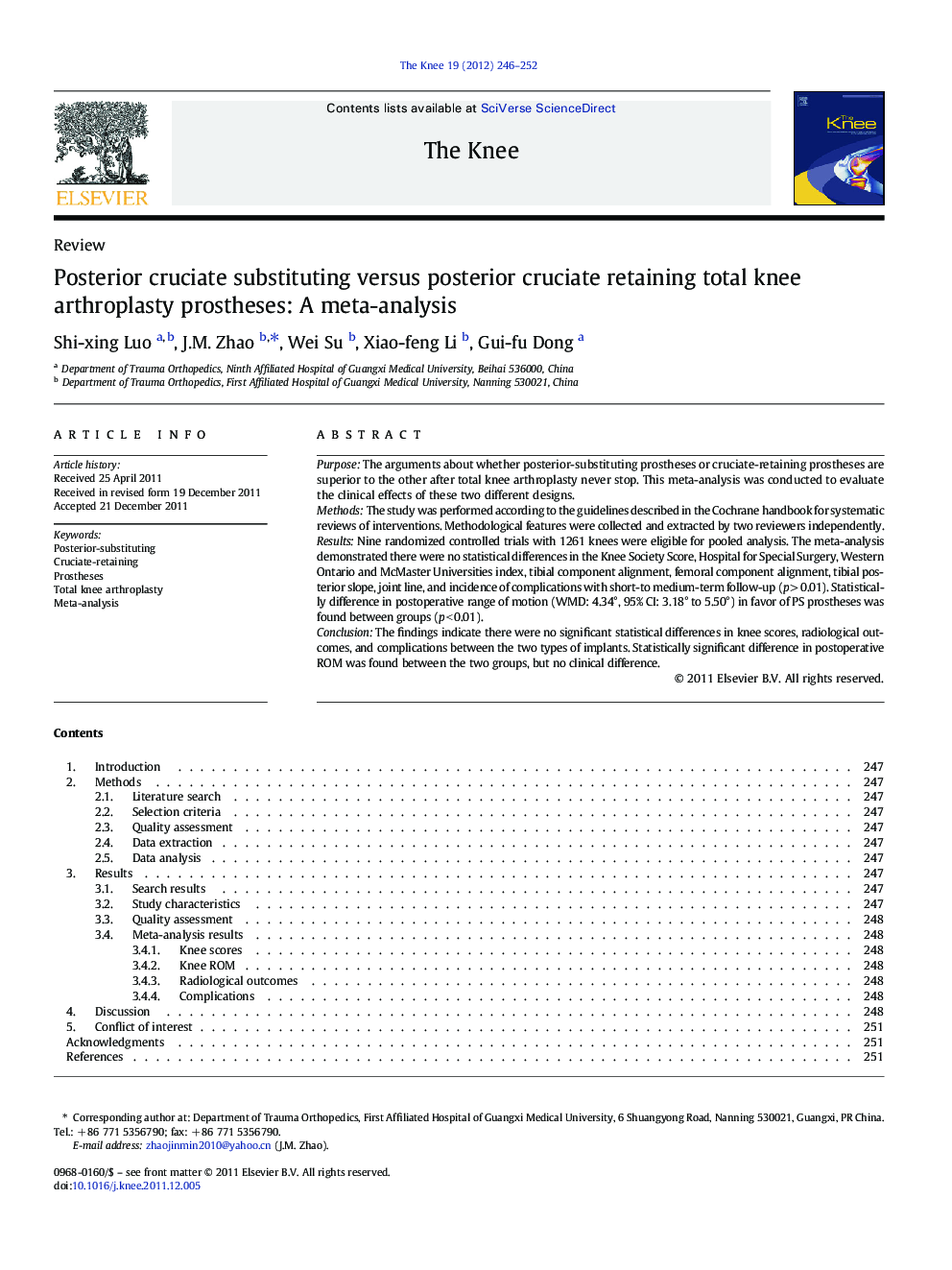| Article ID | Journal | Published Year | Pages | File Type |
|---|---|---|---|---|
| 6211418 | The Knee | 2012 | 7 Pages |
PurposeThe arguments about whether posterior-substituting prostheses or cruciate-retaining prostheses are superior to the other after total knee arthroplasty never stop. This meta-analysis was conducted to evaluate the clinical effects of these two different designs.MethodsThe study was performed according to the guidelines described in the Cochrane handbook for systematic reviews of interventions. Methodological features were collected and extracted by two reviewers independently.ResultsNine randomized controlled trials with 1261 knees were eligible for pooled analysis. The meta-analysis demonstrated there were no statistical differences in the Knee Society Score, Hospital for Special Surgery, Western Ontario and McMaster Universities index, tibial component alignment, femoral component alignment, tibial posterior slope, joint line, and incidence of complications with short-to medium-term follow-up (p > 0.01). Statistically difference in postoperative range of motion (WMD: 4.34°, 95% CI: 3.18° to 5.50°) in favor of PS prostheses was found between groups (p < 0.01).ConclusionThe findings indicate there were no significant statistical differences in knee scores, radiological outcomes, and complications between the two types of implants. Statistically significant difference in postoperative ROM was found between the two groups, but no clinical difference.
